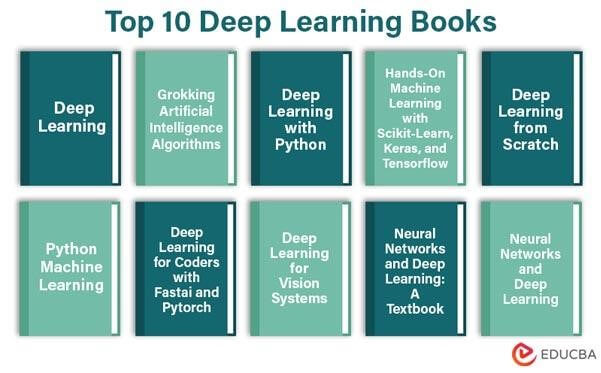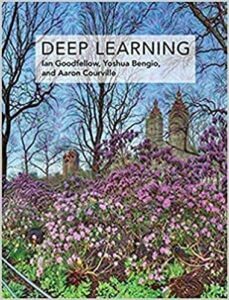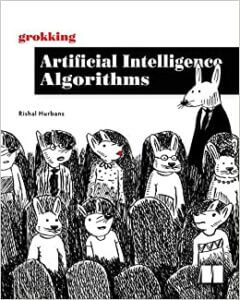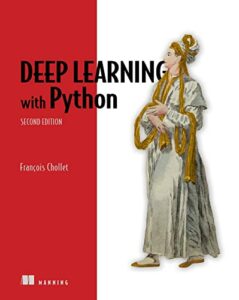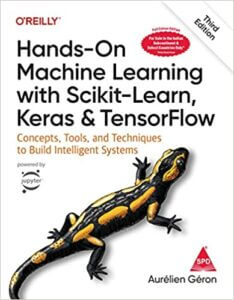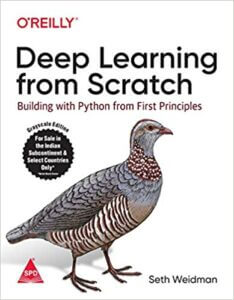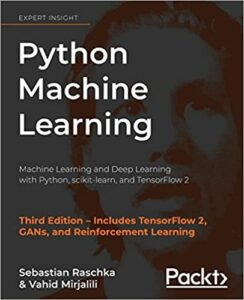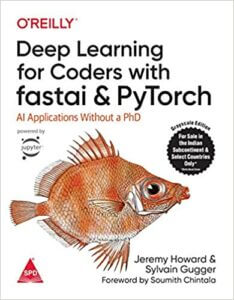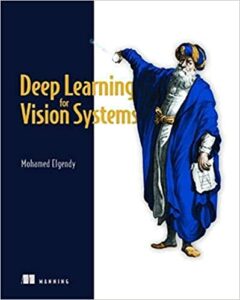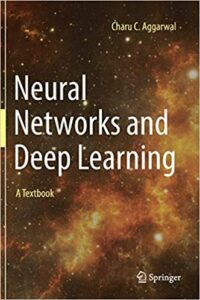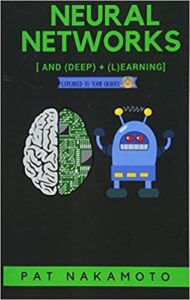Best Books for Reading About Deep Learning
Deep learning Books display the advancement of Artificial Intelligence and a facet of machine learning with neural networks. Machine learning is the ability of computers to learn through the creation of statistical models and algorithms, and deep learning uses neural networks to study relationships and patterns in data. The deep learning algorithms are of many layers and require large amounts of labeled data and powerful hardware to train. Today the natural language processing and image and speech recognition that we enjoy in our home space, work, and travel space, is all thanks to deep learning.
The list of books that we have provided below will help the readers to understand deep learning clearly. These books are a must-have for anyone who wants to increase their knowledge about the subject or take their career to the next level.
Below is the list of the top ten books through which professionals and beginners can enhance their understanding of deep learning.
Let us go through the reviews of Deep Learning Books one by one.
Book #1 Deep Learning (Adaptive Computation and Machine Learning Series)
Authors: Ian Goodfellow, Yoshua Bengio, and Aaron Courville
Buy this book here
Review:
The book is a comprehensive introduction to deep learning with examples and exercises. It discusses the experiential learning of a computer and how it comprehends the world through a pyramid of concepts. The author discusses topics ranging from the basics of neural networks to more advanced concepts like deep reinforcement learning. The book is written in a clear and accessible style to help readers better understand deep learning.
Key Points:
- The book shows the reach of deep learning as a powerful tool for building sophisticated machine-learning models.
- It also reveals how deep learning models outperform traditional machine learning models.
- It covers advanced techniques for training deep neural networks, including unsupervised, transfer, and reinforcement learning.
- The authors discuss the ethical and societal implications of deep learning and artificial intelligence.
Book #2 Grokking Artificial Intelligence Algorithms
Author: Rishal Hurbans
Buy this book here
Review:
The book starts with an intro on how deep learning works intuitively before diving into the mathematics behind it. The reader gets hands-on experience with Artificial Intelligence algorithms for different user interfaces. A programmer can create Intelligent searches that will aid in decision-making. The book further offers algorithms derived from biological inspirations, knowledge of neural networks, machine learning, and the know-how of reinforcement learning to help build more efficient robots.
Key Points:
- Artificial intelligence algorithms are constantly evolving and becoming more sophisticated with deep learning. Many industries, including healthcare, banking, and manufacturing, stand to benefit from it.
- The book covers a range of deep learning algorithms, including supervised and unsupervised learning algorithms and algorithms for searching and planning.
- It discusses the limitations and ethical considerations of artificial intelligence algorithms and how to use them responsibly.
Book #3 Deep Learning with Python
Author: François Chollet
Buy this book here
Review:
The author provides a comprehensive overview of deep learning, including theory and practical applications. The book begins with an overview of the concepts and tools needed to understand deep learning, including the Python programming language and the Keras library. It is written for a general audience, which makes it easier for readers with little or no knowledge of machine learning.
Key Points:
- The book covers the basics of neural networks, including how they are structured and how they learn from data.
- It provides practical guidance on preprocessing and preparing data for deep learning, including techniques for handling missing values, scaling features, and generating synthetic data.
- The author discusses more advanced topics, such as convolutional neural networks (CNNs) for image classification and recurrent neural networks (RNNs) for natural language processing.
Book #4 Hands – On Machine Learning with Scikit-Learn, Keras, and TensorFlow
Author: Aurélien Géron
Buy this book here
Review:
One of the book’s strengths is its hands-on approach, with many examples and exercises to help readers apply the concepts and techniques discussed. It also includes a wealth of resources, such as code examples and datasets, to help readers get started with machine learning. The book discusses the trade-offs between bias and variance and how to avoid overfitting and underfitting. It also covers topics such as deploying machine learning models in production environments and working with large datasets using distributed systems.
Key Points:
- The book thoroughly introduces machine learning, including the fundamentals of algorithms and techniques such as linear regression, logistic regression, support vector machines, and decision trees.
- The learner also gets hands-on knowledge on more advanced topics, such as ensemble methods, neural networks, and deep learning.
- The book emphasizes the importance of evaluating and fine-tuning machine learning models and covers cross-validation, hyperparameter tuning, and model selection techniques.
- It also includes chapters on real-world machine-learning applications, such as image classification, natural language processing, and recommendation systems.
Book #5 Deep Learning from Scratch: Building with Python from First Principles
Author: Seth Weidman
Buy this book here
Review:
The book is an in-depth guide to deep learning, focusing on building artificial neural networks from scratch using Python. It helps readers understand how these models work and how to implement layered neural networks.
Key Points:
- The book discusses building artificial neural networks and recurrent neural networks using Python.
- It covers topics ranging from deep learning foundations to building and training neural networks to apply deep learning to real-world problems.
- It also includes many examples and exercises demonstrating concepts and techniques of deep learning model implementation.
Book #6 Python Machine Learning
Author: Sebastian Raschka and Vahid Mirjalili
Buy this book here
Review:
The authors Raschka and Mirjalili broke challenging concepts into a beginner-friendly language. The book showcases three main parts; an introduction to machine learning, deep learning, and advanced topics. Through this, serious programmers will learn to apply machine learning and deep-learning techniques to real-world problems.
Key Points:
- The book begins with machine learning and covers main concepts such as supervised and unsupervised-learning and different machine learning algorithms.
- The book’s second part covers deep learning in detail, including topics such as neural networks, convolutional neural networks, and recurrent neural networks.
- The third section covers advanced topics like techniques for improving the performance of machine learning models and machine learning case studies.
Book #7 Deep Learning for Coders with Fastai and Pytorch
Author: Jeremy Howard and Sylvain Gugger
Buy this book here
Review:
Deep Learning for Coders with Fastai and Pytorch guides coders to become comfortable with Python, understand deep learning, and achieve impressive results. It is an engaging book that enhances the speed, accuracy, and reliability of deep learning. Users can convert their models to web applications. It is also available as an online course.
Key Points:
- It covers various topics, including image classification, natural language processing, and collaborative filtering.
- It uses the FastAI library and PyTorch, an open-source deep learning framework, to illustrate concepts and techniques.
- It also provides practical guidance on setting up a deep learning environment and debugging and optimizing deep learning models.
Book #8 Deep Learning for Vision Systems
Author: Mohamed Elgendy
Buy this book here
Review:
The author discusses a range of topics- deep learning basics and their applications in vision systems. It further covers more advanced concepts like convolutional and recurrent neural networks. The book also includes several case studies and examples demonstrating the application of techniques to real-world vision tasks.
Key Points:
- The author covers various topics related to using deep learning techniques for computer vision tasks.
- The book also covers practical considerations for implementing deep learning models for vision systems, including data preprocessing, model training, and evaluation.
- The author uses only high school algebra, making the content easy to understand for all programmers.
Book #9 Neural Networks and Deep Learning: A Textbook
Author: Charu C. Aggarwal
Buy this book here
Review:
It is a helpful book for anyone who wants to get started with deep learning and neural networks. The author has covered the two main deep learning models- classical and modern. The author explains the functioning of neural networks- why they work and in which situations they perform better than machine learning off-the-shelf models. Each chapter builds on the previous one, providing a thorough and step-by-step guide to the subject matter.
Key Points:
- The book covers the basics of neural networks, including the classical and modern models.
- The book also discusses diverse applications of how different scenarios have dedicated neural networks built for them.
- The author details the pitfalls and the different neural architectures designed per situation.
- The author covers machine learning in current practices and ongoing research.
Book #10 Neural Networks and Deep Learning
Author: Pat Nakamoto
Buy this book here
Review:
The author discusses the fundamentals of Neural Networks and Deep Learning. The reader explores adding memory to Neural Networks and how deep learning learns. The book delves into architecture and the available libraries and frameworks. The writer has kept the beginners in mind and made the content accessible to someone with little or no knowledge of the subject matter.
Key Points:
- The book helps beginners get a sound grasp of Neural Networks and their functions at various levels.
- The readers gain knowledge of the two chief algorithms of Machine Learning- Supervised and Unsupervised.
- The book takes the reader through the depths of Neural Networks, from its introduction to building a complete neural network and adding memory.
Recommended Books
Our Top 10 Deep Learning Books article hopes to provide a sound understanding of the neural network. For extensive knowledge of deep learning, EDUCBA recommends the following,
